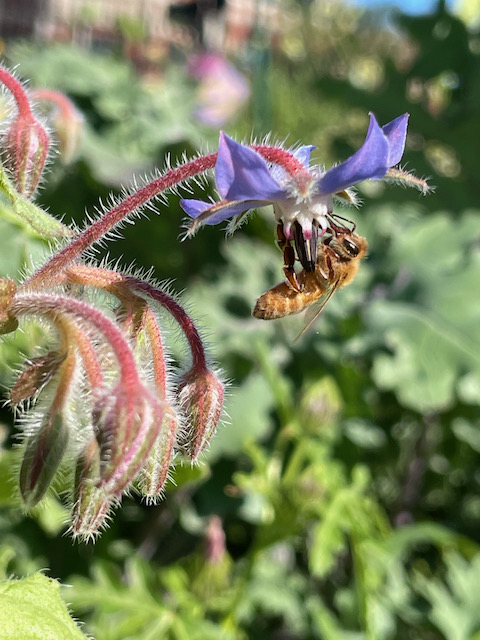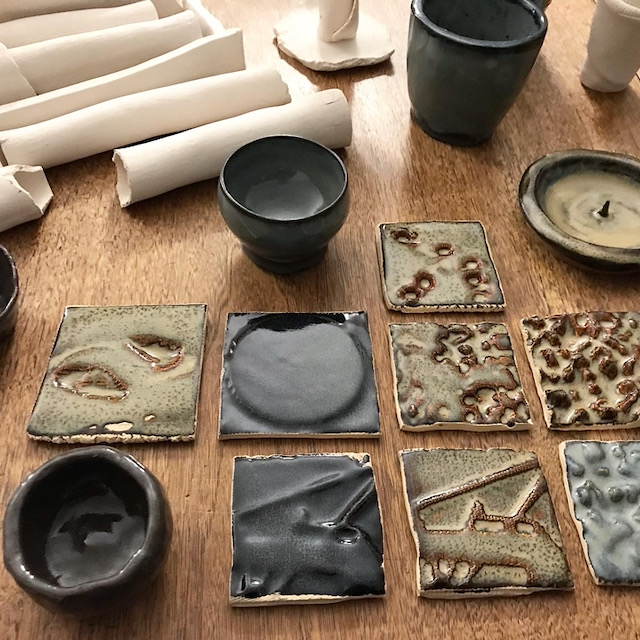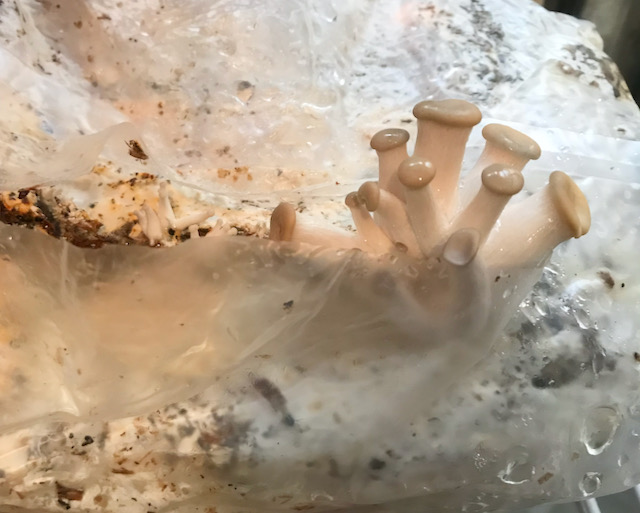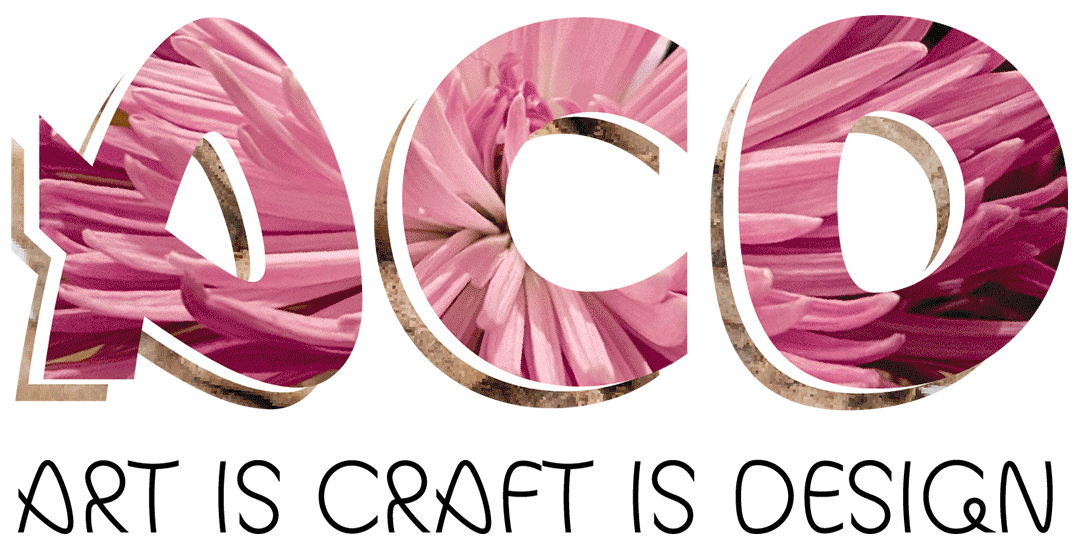So many design books begin with a seductive premise: what defines humanity is our ability to design. Starting from cupped hands scooping water along the banks of an idyllic river, man soon developed tools- vessels- to hold water, and from there, tools like stone knives, iron plows, and houses that made up villages and cities.
But humans aren’t the only beings who make art and design things. Countless animals and insects create tools and homes, ornament their bodies, and more. Like humans, they observe their environment and make decisions based on those observations. That is how tailorbirds sew leaves together using plant and insect fibers like grass and caterpillar cocoons to make their nests. All without killing the leaves they’re sewing.

What makes humanity’s ability to learn and make more special than a bee’s ability to create geometrically perfect cities in the form of beehives made of honeycomb? How does the act of producing fast fashion bestow humanity upon our species but the act of using coconut shells as body armor and shelter doesn’t bestow humanity upon veined octopuses?
Once I shifted my understanding of our fellow beings, I began to ask, is an ant an architect? Is a bird that adorns itself with twigs and rhythmically hops around a costumer and a dancer? Is a bear who takes the time to watch a sunset an aesthete? Should such human terms even be applied to non-human species?
Once I saw other beings’ abilities as equally valid as humanity’s, I had to ask why humans are considered artists and designers but animals and insects are barely acknowledged as tool makers.
For years, I wondered what the distinction between art, craft, and design was since I could point to any number of creative works that could be classified as belonging to any or all three of those disciplines. What separates a ceramic vessel that is millennia old as craft from a contemporary ceramic vessel as art? For that matter, why is a contemporary ceramic vessel made by someone who did not attend an art school often considered craft?

The goal is not to see humans as the same as all other beings, but to question why so many of us are raised to unquestionably assume that humans are superior. Because the goal is not to provide an answer but to question the Eurocentric assumptions so many of us have been raised with, so that we can each interrogate our biases.
What defines superior? Brain size? Opposable thumbs? The ability to solve complex math equations? What a slippery eugenics slope. Would these human conceits even make it onto an orca’s list of superior traits? Would an orca even have such a list?
If human beings are not the epitome of evolution and not the only ones who make things, then what do our artificial hierarchies dividing the disciplines of art, craft, and design matter? The definitions of these words are not universal truths. It’s unlikely they apply to the beings with whom we share this planet. And these words don’t even apply to all human cultures.
Many cultures around the world do not have separate words for the fields of art, craft, and design. They see no need for separate words because they do not have the same hierarchy between skills such as painting and embroidery that Western cultures do. For example, in cultures that do not use alphabets, calligraphy may be valued above painting, as has historically been the case in China. Different sets of or a lack of creative hierarchies have been common throughout many communities for millennia, from Turtle Island to Pasifika and everywhere in between.
If the distinctions between art, craft, and design are such immutable laws, then why do so many people around the world not feel any poorer for not using them? In comparison, the colonial distinctions between art, craft, and design are very recent.
During the Age of Enlightenment (17th-18th c.), a time of rampant colonialism and empire building, the English definition of art began to change from “skill as a result of learning or practice,” to our modern definition of “the products of human creativity; works of art collectively,” and “the creation of beautiful or significant things”. Europeans defined what was beautiful and significant.
At the same time, the Industrial Revolution, which many scholars agree started in 1760, birthed the field of design as we know it in the Global North. In the late 14th c., design as a verb meant, “to make, shape”. Now, the definition also includes, “create the design for; create or execute in an artistic or highly skilled manner,” and “make a design of; plan out in systematic, often graphic form”. Design went from being a verb or a noun that described an action or an object, to the name of a profession.
Design as a profession and discipline is only a few hundred years old. What separates an industrially mass manufactured glass cup designed by a European designer as Design from mass manufactured glassware made in an ancient Egyptian glass factory as craft?
The distinctions between art, craft, and design are not universal truths that separate us from supposed lesser beings. They are not even truths shared by all human cultures throughout time. They are relatively recent inventions spread to reinforce European supremacy. Prominent European philosophers such as Hegel spread the idea that Europeans were so right about everything that their ideas were universal truths. This was in an attempt to justify the trans-Atlantic slave trade. All other cultures, along with their views on craft, had to be negated in order to make Europeans feel superior. It is only the legacy and reinforcement of colonialism and white supremacy that make the distinctions and hierarchies between art, craft, and design seem true.

So what is the point, when we live in a world that does take the distinctions between art, craft, and design seriously? When, if you’re applying for grants, schools, or exhibitions, you need to be able to articulate what field you work in?
Knowledge itself is a worthy goal. By seeing the biases inherent in the way we categorize things and use language, we can better understand why concepts and systems are the way that they are. And when we understand that, we can push back.
This website is a small way in which to imperfectly push back against the colonial system in which we operate. It’s a call against the idea of us vs. them, whether the them in question are other species or people working in supposedly different disciplines. The world is much more complex than we often experience or realize in our day-to-day lives. Breaking free of tribalism to see the inherent worth of others is essential.

Leave a Reply